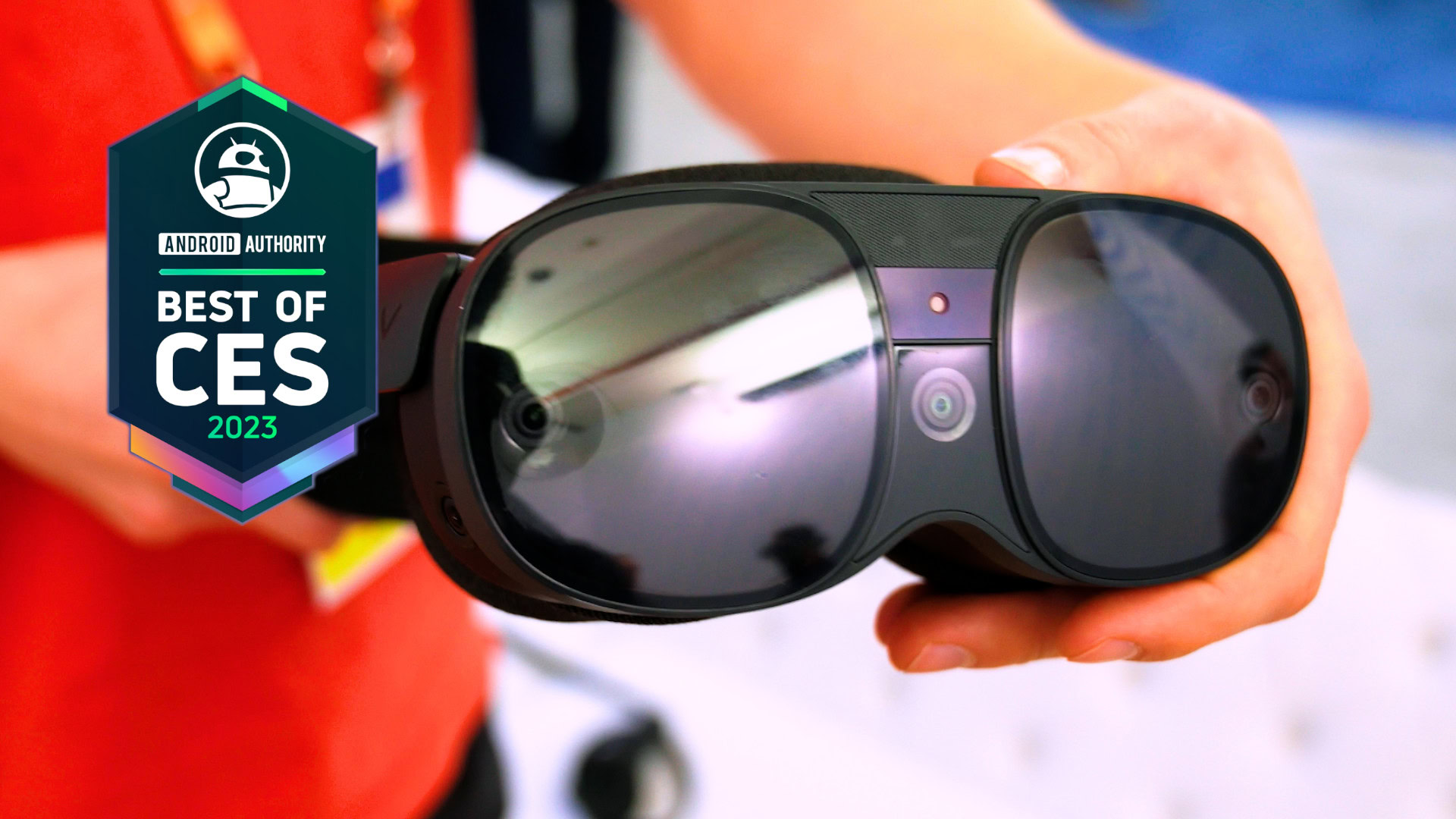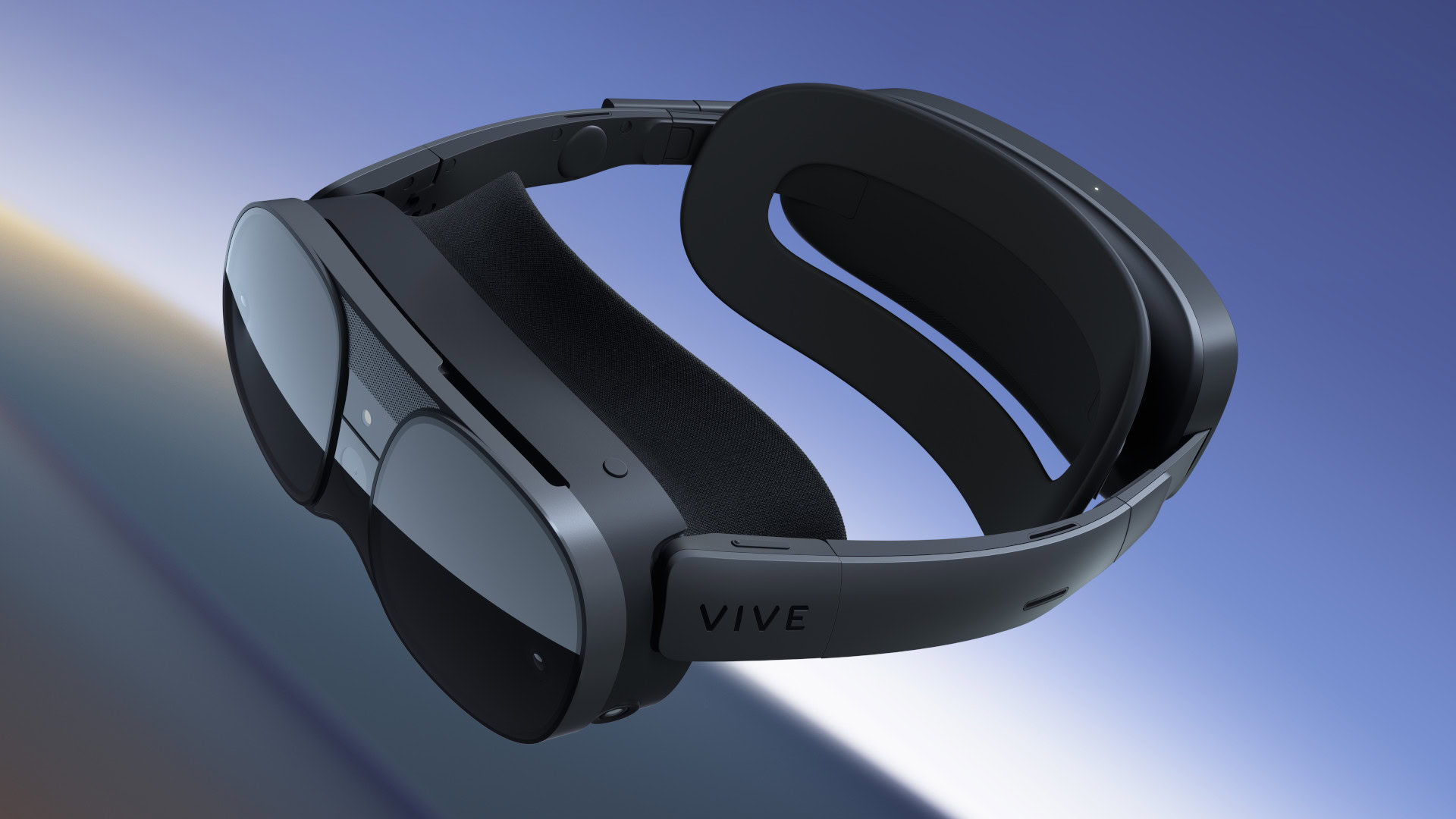After a brief explosion around 2016, VR quickly faded into the background. It’s not that it went away, but some of the hype died down. This started to change beginning with the Meta Quest 2 launch in 2020. More recently, Sony announced its PSVR 2, and then there was Meta late last year with the new Quest Pro. Not one to be left out, HTC Vive XR Elite is here to take on the Quest Pro.
I had the opportunity to test out the HTC Vive XR Elite recently at CES 2023, and these are my quick impressions.
What exactly is the HTC XR Elite Elite?

Jonathan Feist / Android Authority
The HTC Vive XR Elite is an AR/VR hybrid device, meaning it fully supports both virtual and augmented reality. When in VR, you can’t see your real-world environment when the headset is on, but AR uses internal cameras to provide you with a full-color view of the world around you. It basically then transposes augmented objects into your real-world environment.
The awesome thing about the HTC Vive XR Elite is that it is a fully stand-alone headset, which seems to be the trend. This means no tripping on wires when in VR mode, and you can interact with the augmented world while easily moving around the real one.
Most of my time was spent in AR because that’s the bigger news here. That said, I did check out the VR experience, and I have to say I’m quite impressed. The graphical capability is obviously much better than something like the Meta Quest 2 and surprisingly close to what I remember early PC VR looking like. As they say, times change.
The Elite’s controllers are easier to figure out than the PSVR 2’s controllers.
The Vive XR Elite has plenty of advanced VR features, including hand tracking, full-color passthrough for when you want to see where you are in the real world, and decent easy-to-use controllers. While I had a heck of a time mastering the PSVR 2’s controllers initially, the Elite’s controllers were much easier for me to figure out. I also tried out AR first, where I could see the buttons and learn the controller, to be fair.
Since this is a self-contained unit, be aware that there may be limits to the kind of VR experiences you can do right from the headset. Certain games require more demanding hardware than the Qualcomm XR2 chip is capable of. The good news is that you can connect the XR to your PC through an optional cable, opening up the high-end VR experience to the HTC Vive XR Elite.
HTC Vive XR Elite’s AR mode was super fun!

I was able to check out three different AR demos to get a taste of what AR is like in 2023. One demo had you pick up a virtual guitar and stream along to the music. Another one was designed with sports training in mind, where you basically play a virtual game of whack-a-mole to test your reaction times and try to improve them. My favorite experience was an art program.
You are given a virtual Palette with a bunch of color choices and a pen in your hand. Around the real room, I found an augmented canvas and a few statues. Going up to the canvas, I just easily scribbled on it — no buttons required. I could leave the digital canvas and paint the world around me with a simple button press.
I really dug the AR experiences, but I was also left wanting more.
I got my graffiti on, let me tell you! I was drawing cats and dogs and even put a mustache on my boss. Out of curiosity, I wanted to see if I could make it look like I was actually drawing on furniture or the walls. It wasn’t perfect, but yeah, it looked like I had gone nuts throwing paint around the room.
I really dug these experiences, but I was also left wanting more. Part of me was excited by this potential. The other part of me wondered if there would be enough apps and experiences to make it worth the price. It’ll be a while until I have the answer to that question, but I remain cautiously optimistic for now.
A lot like Meta Quest Pro, but cheaper and lighter

Supplied by HTC
The HTC Vive XR Elite isn’t the first to bring this kind of self-contained AR/VR experience to the market. The winner there would be the Meta Quest Pro. However, the XR Elite isn’t merely HTC Vive’s attempt at playing catch-up.
There are a few ways the XR Elite is superior to the more expensive Quest Pro. First, it’s lighter at 625 grams, over the 722 on the Quest Pro. It’s also super comfortable. I can’t speak for the Pro as I’ve yet to get time with it.
It’s possible to break the XR down into a pair of travel goggles.
This lowered weight also makes the XR Elite much more portable. In fact, we learned in an interview with HTC Vive that it’s actually possible to break the XR down into a pair of travel goggles, similar to the HTC Vive Flow.
The last major advantage of the HTC Vive XR Elite is the price tag. Starting at $1,099, the XR is roughly $400 cheaper. But are the sacrifices bigger than the savings you get? Personally, I don’t think so.
HTC’s new headset has the same 2K resolution for each eye and the same 90Hz refresh rate. Many of the specs are quite similar, though the Pro definitely is the more powerful headset. Where the Pro beats the XR is added advanced eye and face-tracking, though HTC plans to release add-on modules that will eventually bring similar functionality to the headset. The Quest Pro also has a slightly newer and faster Qualcomm XR2+ onboard.
You can’t use glasses with the HTC Vive XR Elite.
Of course, nothing is perfect. The smaller headset size means you can’t use glasses with it, which could be a deal breaker for some. The headset includes diopters that let you adjust to help bring a bit more clarity. For me, this worked enough that it was pretty close to just using my glasses, but those with worse vision might struggle.
Another little thing I noticed is that the IPD dial wasn’t nearly as intuitive as Sony’s solution for the PSVR 2. That makes it a bit harder to get the perfect eye fit.
Should you pick up the HTC Vive XR Elite?
The answer to that question depends greatly on how much you’re vibing on the whole “metaverse” concept. If you are sold on hybrid AR/VR and are looking for a cheaper, lighter alternative to the Quest Pro, then I’d go for it. I’m not quite sure that AR is ready for prime time, but I do believe its future is bright and will only get better. I just hope there’s enough developer support to make the Vive XR Elite’s AR worth it.
If you just want to be part of the 2023 VR rush that we’re starting to see, then you might be better off with a more modestly priced entry device like the Meta Quest 2 or even the upcoming Sony PSVR.



